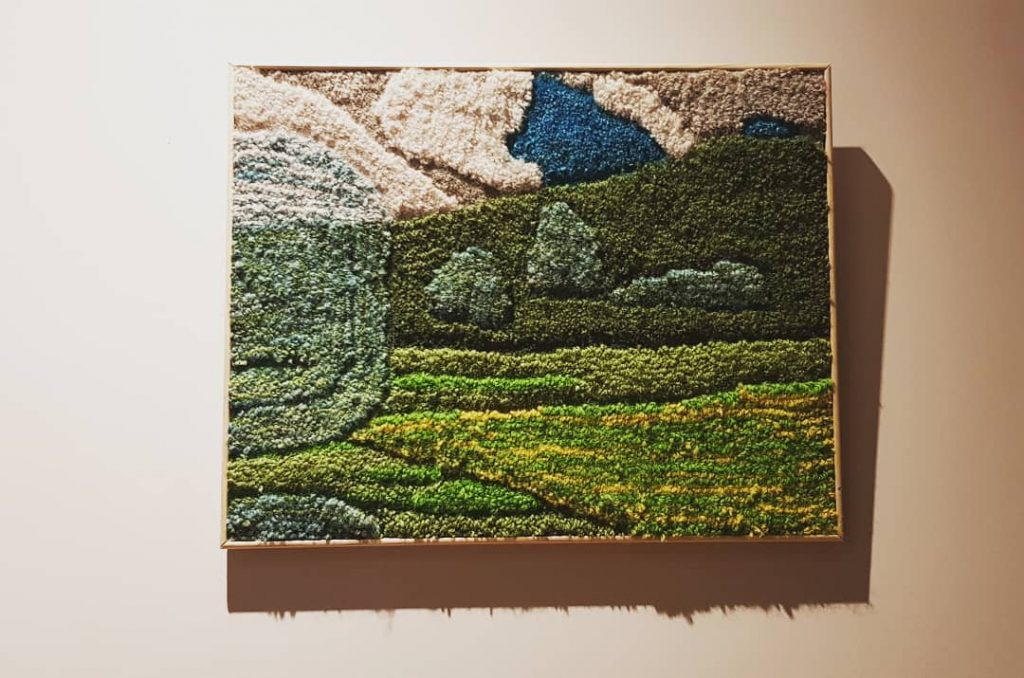Start typing to search
You can also hit “Enter” on your keyboard to submit your query.
0What's on
0Everything Else
From landfill to art
Visit Ballarat
16 Feb 2021
Filed underMakers & Growers
From tying short pieces of wool together to make a ball of yarn, to cutting up silver spoons for earrings, there’s nothing Debbie Weston wouldn’t attempt to re-purpose.
In fact, she’s made it her mission to see the potential in everything (and essentially save it from ending up in landfill).
We’re still trying to wrap our head around how she does it, but we’re super impressed.
Hear from Debbie herself about how she forages for materials to make tufted wall art.

What drew you to textiles?
I love the act of making, creating and the stories of a textiles piece. I enjoy seeing the connections of each step, from choosing the fibres right down to making the final piece. I want people to feel the same way when looking and touching my pieces, to feel a connection with the story through my eyes.
What inspires your work?
Lately my family and world around me have taken root in my textiles. In the last year I have been exposed to a new way of living and have chosen to reflect these moments that make me feel something – whether good or bad. My current series is a reminder to myself and others that 2020 was full of its downs, but had some great ups too.
At what point did you decide you would forage for material over buying new?
Personally, I have always foraged for materials. The idea of giving something old, used or unwanted a new life is something I have aimed to incorporate in my way of living and working for a long time. With all the energy and time taken to create discarded materials, we are not just discarding an object, we are discarding the time and energy already used to create it – why buy something new when you can fix or remake from things already inexistence.
Where do you go to find the right materials?
Everywhere! I find as long as you have your eye open you’ll find something in any location, from walking around in the bush, to op shops and online re-sellers.
It’s a habit I have had since my jewellery days, unfortunately people know me to forage and often come to me with bits and bobs that they themselves have found. I think though, when you’re foraging, you should do it for yourself with the intention of making something. The thing has found them and not me, if I was meant to make something I would have found it myself. I like to encourage those around me to want to repurpose.
We imagine there’s something satisfying with knowing you’re saving something from going to landfill, but does it make your job any harder using used-materials?
I try not to horde, but it’s hard not seeing the potential in everything around you. There are times when things don’t work and I’m left with more work than what I started with. But the key is powering through and always finding a use for it, in my own work or giving it a new home.
What’s the strangest thing you’ve found and transformed?
The strangest thing would be hard to pinpoint; I use everyday things like the plastic in cereal boxes to short pieces of wool tied together to make a longer ball of yarn, or cutting up silver spoons to make earrings. I do have a stash of old metal shoe tips; I am still waiting for that story to be told.
What does Ballarat as a UNESCO Creative City of Craft and Folk Art mean to you?
Support and acknowledgment. Sometimes when the craft isn’t conventional it is seen as some lost hobby, or in my case weaving and tufting is something for old ladies. I want to be able to bring these mediums to the spotlight and recognising Ballarat as a UNESCO Creative City is the perfect way, not only to shine a light on craft, but to help others see craft as a worthy artistic medium.
For those interested in textiles, what piece of advice do you have for them?
I am a student of YouTube. And with social media, especially Facebook, there are so many groups dedicated to all forms of craft. Most, if not all, of craft groups use codes of conduct and are very welcoming of beginners and their questions. There will always be someone willing to help or give advice. The guilds and the CWA are also great places to start. Don’t be afraid to ask questions.
What does your next 12 months look like?
I am really enjoying the rug stories I am creating using my tufting gun. A goal is to have an exhibition of the tufted wall art and a demonstration of the tufting process with an open workshop.
Currently, it’s about being aware of the stories taking place around me, watching and waiting for a new story to pass by and then deciding if I want to share that story and with whom.
And to wrap up, what’s Ballarat best kept secret?
My home. From my desk I feel at ease and free to create with the sounds of my family around me. My deck in the morning as it overlooks Mt Buninyong and lights my inspiration to start my day, as the weather warms I find myself able to sit out there and enjoy the finishing touches to my tufted pieces.
Learn more about Debbie at debwestonmaker.com.au
